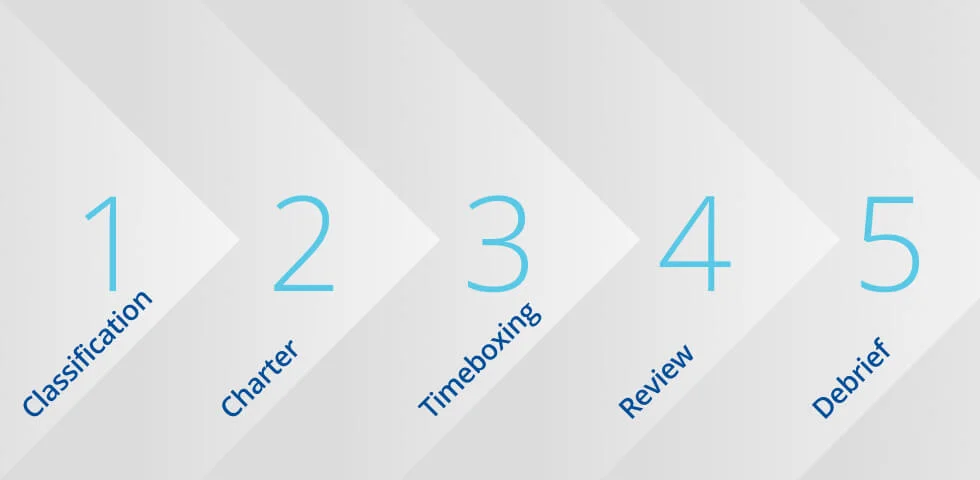
Everything you need to know about exploratory testing will be covered in this article, including the various kinds, how to execute them practically, when it works best, and when it doesn’t. You’ll also explore its advantages and disadvantages, as well as its significance in pipelines for continuous integration and continuous delivery (CI/CD). By the conclusion, you’ll have a comprehensive idea of how exploratory testing may improve the quality and flexibility of your apps and become a useful tool in your software development process.
What Is Exploratory Testing?
A practical method of software testing that focuses on adaptability, creativity, and real-time learning is called exploratory testing. In contrast with traditional testing techniques, which stick to pre-written scripts, exploratory testing enables testers to create and run tests as needed, modifying their strategy in response to the software’s behavior. By fully utilizing a tester’s intuitive and analytical abilities, this kind of testing can find flaws that programmed testing would overlook. The goal is to thoroughly examine the program to identify any unforeseen issues that frequently show up in complex parts of an application.
This approach is very useful in agile teams and other fast-paced development environments where software is constantly evolving. It’s perfect for situations when testers need to quickly understand how modifications or new features might affect overall functionality. Exploratory testing provides an additional layer of quality assurance by effectively detecting complex flaws that automated tests might miss, despite the fact that it can take longer than scripted methods.
Differences Between Scripted or Authored Tests and Exploratory Testing
Exploratory tests offer a strikingly different approach compared to scripted testing:
- In scripted tests, the testing process is governed by specific requirements. Exploratory testing also has requirements, but the tester’s journey is guided by their observations and learnings during the process.
- Scripted tests develop test cases well in advance of execution; in exploratory testing, cases are developed in the midst of testing.
- Scripted testing uses tests to confirm requirements, while exploratory testing is about investigating an application or system. The emphasis in scripted testing is on prediction and making decisions, while the focus of an exploratory test is on learning from and adapting to the results of successive tests.
- In scripted testing, the script is the final authority on how the test is run. In an exploratory test, the tester’s knowledge, intuition, skill, and powers of observation are the driving forces in determining how the test plays out.
Types of exploratory testing
Here are a few types of exploratory testing:
1. Freestyle:
Here, the testers take an approach that is not guided by a defined rule, structure, or specification. While this might seem too flexible and random, this ad hoc approach allows testers to find just about anything with the application. They often need to come up with an exploration strategy, have peer reviews, and do smoke tests.
2. Strategy-based:
Unlike the freestyle exploratory testing, this approach is more strategic. It is also often conducted by the most experienced tester who has known the application for the longest. Here, strategies such as boundary value analysis, risk-based, and equivalence techniques are employed. These strategies also identify bugs that could occur under different conditions or inputs.
3. Scenario-based:
Here, the testing is done by following scenarios an end user will face when using the application. For example, when testing onboarding, the tester will find and test all possible pathways the end user will encounter. This testing approach aims to test as many scenarios as possible and identify any challenges or bugs end users might encounter.
4. Pair or Collaborative:
This testing approach involves two or more people working together to explore a single test for the application. The pair here could be a tester and a developer, for example. The advantage of this approach is simple: two heads are better than one. Thus, more bugs could be identified and new viewpoints could emerge.
How to Perform an Exploratory Test
While there’s a great deal of creativity and customization involved in exploratory testing, the process of performing an exploratory test is actually quite structured. Typically, two testers are assigned to perform exploratory tests based on their experience and knowledge. They should be given a clear mission at the start of the test, and they must take thorough notes of their methods, issues, and questions raised throughout the process.
Here’s a step-by-step guide to performing an exploratory test:
Step 1: Classification
Testers examine the kinds of problems that were frequently discovered in earlier projects during this first stage. This involves identifying the root cause reasons, evaluating any hazards, and coming up with innovative ideas for efficient application testing. Prioritizing their areas of concentration during testing is made easier for testers who are aware of previous problems.
Step 2: Charter
Determining the goals and parameters of the exploratory test requires the creation of a test charter. What has to be tested, how it will be tested, and where to begin are all described by testers. Additionally, the charter takes user interactions into account, guaranteeing that testers replicate realistic usage scenarios.
Step 3: Timeboxing
Timeboxing is the practice of testers setting a time restriction for each testing session in order to preserve efficiency. Usually, two testers work together for a short period of time, perhaps ninety minutes, to thoroughly examine the software. This time-limited method enables controlled exploration and assists with maintaining focus.
Step 4: Review
Following the testing session, testers examine the flaws they found and consider the lessons they learned. In this step, the test coverage is evaluated, and any areas that could require more research are noted. Examining the results ensures that important problems are noted and that the testing procedure is still comprehensive.
Step 5: Debrief
In the last stage, testers gather their findings, write an in-depth report, and compare them with the initial test charter. The debriefing indicates any additional steps required and assists in determining whether the testing objectives were reached. Development teams and stakeholders may benefit a lot from this research.

When to use exploratory testing?
Though exploratory testing is time-consuming compared to other forms of testing, there are situations where it’s appropriate. Conducting exploratory testing helps when:
- Testers are experienced. Since this testing approach lacks a formal test script, experienced testers with domain knowledge are necessary.
- Urgent feedback and early iteration are required. This can be credited to exploratory testing’s versatile and spontaneous nature, because we don’t need to structure the test to begin testing.
- Testing for the first time. This will give you more room to explore and discover.
- The application is critical and complex. Experienced testers can identify potential issues not highlighted in the design documentation.
- Acts as support for other kinds of testing, from unit testing to load testing and functional testing.
- Situations and requirements are constantly changing. This is particularly important for Agile environments.
Use Case with Example
Picture a startup creating a new financial transactions mobile application. The app is currently in its early phases, thus user feedback and requirements are always changing. Because it enables testers to quickly adapt to change and investigate the product without being limited by pre-written routines, exploratory testing is perfect in this situation. Skilled testers can go into the essential features of the app and find unusual problems, such as how it responds to varying network speeds or odd user behavior.
For example, a tester may discover an issue that causes the app to crash if a user tries to transfer money after quickly switching between accounts—something a scripted test may miss. Because of its adaptability and emphasis on identifying root causes, exploratory testing is perfect for complex, new, and dynamic projects like this.
When not to use exploratory testing?
As great as exploratory testing is, there are some situations when you don’t need it:
- When you need to follow regulated or compliance-based testing. Stick with the checklist and government mandates for legal reasons.
- When you no longer need to monitor the test execution closely. This means you already have your test coverage documented and your automated build verification tests established.
Use Case with Example
Imagine a big company running a medical application that deals with private patient information and needs to adhere to some laws like HIPAA. Here, the emphasis is on making sure that the application satisfies strict compliance requirements in every way, which calls for a methodical approach. In this case, scripted testing is more appropriate since it guarantees that all regulatory requirements are evaluated in-depth and reliably. The team must, for instance, confirm that every user authorization and data encryption function operate exactly as required by the rules.
Because exploratory testing does not ensure the same amount of documentation and repeatability required for audits and legal compliance, it may overlook some of these important concerns. As a result, for applications like these where following certain guidelines is essential, controlled testing with predefined scripts is the ideal choice.
Pros of exploratory testing
Exploratory testing offers many advantages over scripted testing. With exploratory testing techniques, you can:
- Find more bugs than with other testing techniques
- Find defects that are often ignored by other approaches to testing
- Spend less time preparing tests, and more time running them
- Review work performed by other testers and other methodologies
- Test new features while using regression tests to examine existing features
- Improve the effectiveness of traditional testing processes by converting exploratory sequences into scripts for functional testing
- Explore an application just as a real user would to ensure that important steps and features aren’t missed
- Test software using a variety of real-world variables such as different devices, various Internet speeds, the amount of storage, and so on
- Test for localization – in other words, how the product works in a specific language, how well text was translated, whether there is missing text, and whether line breaks and character counts work as intended
Cons of Exploratory Testing
Despite its benefits, exploratory testing comes with some challenges, including:
- It heavily relies on the skills and experience of individual testers, which can vary greatly.
- The tester’s knowledge of the application can limit the scope of testing.
- Replicating specific test scenarios or failures can be challenging.
- Documentation of test cases can be inconsistent, making it difficult to track the testing process.
- It may be less suitable for highly regulated environments where extensive documentation and compliance are required.
- Estimating the time required for exploratory testing can be difficult, leading to potential delays in the testing phase.
Best practices of exploratory testing?
Here are some best practices of exploratory testing:
- Learn more about and understand the application functionalities and paths before testing. This and your domain knowledge will help you uncover issues thus it is best to have adequate resources and understand the application.
- Set and define clear objectives. This also cuts across identifying the scope and risk area of the application.
- Capture everything. This includes taking notes, screenshots, and videos to document any bugs, insights, observations, or new viewpoints.
- Create a bug report. This often includes the steps taken, test condition, area tested, and your insights.
- Have peer reviews and don’t work in isolation. Collaborate with other testers, developers, and stakeholders.
- Measure exploratory testing efficiency using KPIs such as defect detection rate, time efficiency, defect density, and code coverage.
How exploratory testing supports Agile development
One of the significant benefits of Agile methodology is that developers and quality assurance (QA) teams can find bugs earlier and faster, avoiding the risk and cost of rework and late fixes. Because Agile development involves a series of quick sprints and frequent iterative changes to software, testing is extremely important to producing quality software.
Exploratory testing is an excellent fit for Agile development for several reasons.
- Exploratory tests often find defects that automated tests miss. While exploratory testing cannot be a substitute for automated testing it can serve as an excellent complement by uncovering critical defects that would likely be missed by an automated approach.
- Exploratory tests offer a more diverse approach. Exploratory testers may have a wide range of skills and expertise – they can be developers or UX designers, support engineers or product managers. The more diverse the group of testers and their perspective on the application, the better the results are likely to be.
- Exploratory testing can support the speed of development cycles. Because they don’t require time for writing, preparing, and approving test cases, exploratory tests can provide feedback in a very short time period – an essential benefit during very fast Agile sprints.
Importance of exploratory testing in CI/CD
Exploratory testing offers many benefits across the software development cycle.
For starters, exploratory testing helps the QA team to identify and address bugs faster, iteratively, and easier in the CI/CD pipeline. Thus, we can say that its fast nature embodies the adaptability features of Agile development. This testing approach also increases test coverage, helps discover new edge cases, and uncovers bugs that automated tests and other testing techniques might miss. This is particularly useful because it isn’t rigid, as testers don’t need to write tests beforehand.
Differences between scripted and exploratory testing
Exploratory tests offer a strikingly different approach than scripted testing.
In scripted tests, the testing process is governed by specific requirements. Exploratory testing also has requirements, but the tester’s journey is also informed by their own observations and learning during the process.
Scripted tests develop test cases well in advance of execution; in exploratory testing, cases are developed in the midst of testing.
Scripted testing uses tests to confirm requirements, while exploratory testing is about investigating an application or system. The emphasis in scripted testing is on prediction and making decisions, while the focus of an exploratory test is about learning from, and adapting to, results of successive tests.
In scripted testing, the script is the final authority on how the test is run. In an exploratory test, the tester’s knowledge, intuition, skill, and powers of observation are the driving force in determining how the test plays out.

Tricentis tools for exploratory testing
Tricentis offers a Continuous Testing platform that is reinventing how software testing is integrated into DevOps. With solutions for Agile test management and advanced test automation, Tricentis delivers automated insight into the business risk of each software release.
The Tricentis platform offers solutions that support exploratory testing.
- Tricentis Tosca supports exploratory testing across custom, packaged, and mobile applications. Tosca is a scriptless, AI-based, no-code solution for end-to-end test automation. With Tosca, you can more easily plan exploratory test sessions, automatically record test actions, and instantly share detailed results. Tosca also enables testers to rapidly define sessions, charters, and test objectives, and Tosca provides a central location for recording testers, timeboxes, and related information.
- Tricentis qTest Explorer is an add-on to the Tricentis qTest platform that is designed specifically for Agile testers. As an exploratory testing recorder and documentation tool, qTest Explorer provides development teams with a rich documentation tool that simplifies unscripted testing by intelligently capturing each mouse click, field change, page change, and more. With qTest, testers can record tests, submit detailed documentation of defects to Jira, and instantly turn a test session into an automated script.
Additionally, the Tricentis platform provides software testing tools for Agile test management, data integrity testing, performance testing, Jira test case management, Salesforce test automation, and more.